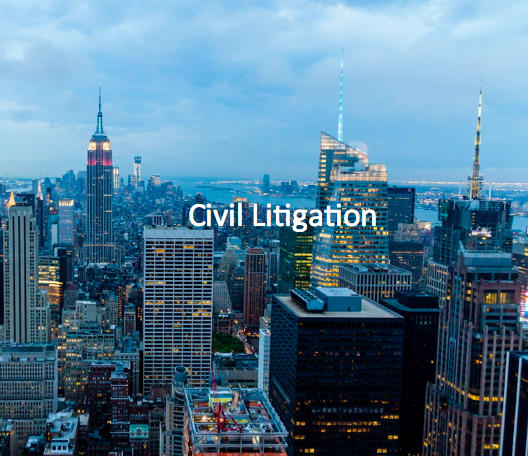by Donald A. Steinbrugge, CFA – Managing Partner, Agecroft Partners
Reinsurance is one of the few hedge fund strategies that has almost no correlation to the stock or bond markets and has the potential to generate high single digit to low double digit returns on average over the next 5 to 10 years, regardless of the direction of the capital markets. It is important for investors to stress test their overall portfolio for major market selloffs, because most hedge fund strategies’ correlations to the capital markets are dynamic and rise dramatically during market selloffs as we saw in the 4th quarter of 2008. Reinsurance funds provided valuable diversifications benefits during that period. This brings us to the question: what is reinsurance and how should an investor evaluate managers in this strategy?
What is reinsurance? It is important to differentiate between the asset class and the legal structure of reinsurance. This paper will be focusing on the asset class of reinsurance and not the legal structure. A number of hedge funds have created a reinsurance structure for their hedge fund strategy, creating a more tax efficient fund for their investment strategy. The current tax benefits are that taxes are deferred as long as they stay in the fund and gains are primarily long term capital gains. The objective is to generate returns from their core strategy, and have as little risk exposure to insurance as possible, but still keep the tax benefits. These are not the type of investments we are referring to in this paper.
The best way to understand the asset class of reinsurance is to compare it to structured credit. Lending institutions can either hold various loans they have made on their books, such as residential and commercial mortgages, credit card receivables or bank loans, or they can sell the loans to other institutions and keep a small transaction fee for sourcing the deal. Insurance companies can do the same thing with insurance policies they underwrite. The insurance market is made up of 2 major risks which include life with approximately $2.5 billion annual premium per year and non-life $1.8 billion premium based on a Swiss Re/Sigma Global 2012 report. Non-life can further be divided into casualty and property. This paper will focus on the property reinsurance market.
When a bank sells their loans to a third party, often the interest and principal payments are broken out into various structured credit tranches, where a purchaser can elect to only purchase the specific cash flows that meet their needs. This carving up of a security concept is similar to how insurance companies carve up a basket of insurance policies. Reinsurers can elect which liabilities on which they would like to bid. For example, they might bid on a bundle of earth quake policies heavily weighted to Southern CA, where they would only be responsible for the liability after a certain dollar amount was paid out first. They could also size the risk to less than 3% of their portfolio.
How do reinsurance firms build out a portfolio? A reinsurance fund is heavily regulated and is limited to how much insurance risk they can assume based on the assets of the fund. Most of these property risk policies have relatively short lives of 1 year or less, but can range up to 2 years. The objective of any good reinsurance fund is to maximize the risk adjusted returns for their investors by building a diversified portfolio of policies based on geography and peril. In building out the portfolio, the reinsurance company should be using sophisticated analytics to identify cheap policies and construct a portfolio by assessing the downside risk of the policies in the portfolio based on a one in a hundred years scenario. This reliance on analytics for security selection and portfolio construction also has similarities to structured credit managers.
How does the math work? Let’s assume the reinsurance fund is targeting a maximum drawdown of 22% percent based on a once in a 100 years occurrence. For this level of downside volatility, the fund would potentially accumulate insurance policies that would generate an 18% return from premiums assuming no claims and a 10% return based on the historical average claims for similar historical risks. The nice thing about property insurance is that perils tend to be very geographically isolated, which means that earthquakes tend to affect very small areas. As long as the portfolio is geographically diversified, and the liability is limited in each specific geographic area, one large earth quake should not have a large impact on the portfolio. To generate negative returns typically requires multiple devastating earth quakes in different locations during the same year. The same is true for hurricanes where most of the damage tends to be concentrated in small areas. For example, hurricanes that hit Florida do not wipe out the whole state, although they might do heavy damage to parts of the state where the center of the storm passes. Reinsurance funds can diversify their exposure with the state by owning separate bundles of insurance policies that are concentrated in different locations within the state.
What is the downside of investing in reinsurance? All reinsurance funds should clearly be able to articulate what their drawdown will be given a one in a 100 scenario of events. There is a very wide range across the industry and it is important to understand what this statistic is to properly compare multiple reinsurance funds. The above “how does the math work example” might have targeted a 30 percent decline for this statistic. This might sound like a lot, but actually is less than the drawdown that many other strategies experienced in 2008. In addition, the tail risk of potential negative performance tends to be much narrower than many other hedge fund strategies with a more consistent return pattern. For example, the one in 20 scenarios of events drops to around seven percent. Doing this same analysis on the S&P 500 would show a decline of 39% based on a one in a 100 scenario and this statistic would only decline to approximately to negative 23% in a one in 20 year scenario.
What is the current market environment? Prices for reinsurance fluctuate over time based on supply and demand. Recent prices have trended lower due to minimal major insured loss occurrences and increased competition from hedge funds entering the space for the tax benefits. This second component may reverse itself because the IRS has begun to aggressively focus on non-traditional reinsurance structures.
What evaluation factors should be used in selecting a reinsurance fund? Like any other hedge fund strategy, multiple evaluation factors should be used when evaluating and selecting a reinsurance fund. These factors are listed below along with some potential questions that should be asked.
Organization: Do they have the appropriate infrastructure to support their operation. What is their AUM? Ideally it should be between $200 million, enough to financially support the organization and below $2 billion. The reinsurance market place is both highly inefficient and capacity constrained. Once assets get too large, the fund generates most of its return through beta as the alpha is diluted over a large asset base.
Investment team: How large is the team and what is its experience level in the reinsurance industry?
Process: What part of the reinsurance market are they targeting? What is their deal flow sourcing capability? Similar to structured credit, often casting a wide net can identify mis-pricings in the market place. What type of analytics are they using to price policies?
Risk control: What analytics are they using to understand risk across the portfolio? What portfolio/diversification rules do they have in their portfolio construction process? Ask them to run scenario forecast current portfolio performance after modeling for historical loss events including 1992 Hurricane Andrew, 2004 Hurricanes Charley, Frances, Ivan, Jeanne, 2005 Hurricanes Katrina, Rita and Wilma and the 1906 San Francisco Earthquake.
Historical track record: How do they compare to their competition? What was their largest drawdown in performance? Have AUM changed over this time frame and will current AUM allow manager to continue generating performance in the future?
Service providers: Are they using high quality/well know organization as their auditor, fund administrator, US council, Bermuda council?
Conclusion: Most hedge fund strategies’ correlations to the capital markets are dynamic and rise dramatically during market selloffs as we saw in the 4th quarter of 2008. It is important for investors to stress test their overall portfolio for major market selloffs and to clearly understand what their downside risk is during these scenarios. Adding strategies with low correlations to the capital markets that do not rise during market selloffs can help reduce performance drawdowns and enhance the overall portfolio’s Sharpe ratio.
If you enjoyed this article you might also enjoy the recent article I wrote relative to CTAs.
Donald A. Steinbrugge, CFA – Managing Partner, Agecroft Partners
Don is the Founder and Managing Partner of Agecroft Partners, a global hedge fund consulting and marketing firm. Agecroft Partners has won 25 industry awards as the Hedge Fund Marketing Firm of the Year. Agecroft is in contact with over a thousand hedge fund investors on a monthly basis and devotes a significant amount of time performing due diligence on hedge fund managers. Don frequently writes white papers on trends he sees in the hedge fund industry, has spoken at over 100 hedge fund conferences, has been quoted in hundreds of articles relative to the hedge fund industry and is a regular guest on business television.
Highlighting Don’s 30 years of experience in the investment management industry is having been the head of sales for both one of the world’s largest hedge fund organizations and institutional investment management firms. Don was a founding principal of Andor Capital Management where he was Head of Sales, Marketing, and Client Service and was a member of the firm’s Operating Committee. When he left Andor, the firm ranked as the 2nd largest hedge fund firm in the world. Previous to Andor, Don was a Managing Director and Head of Institutional Sales for Merrill Lynch Investment Managers (now part of BlackRock). At that time Merrill ranked as the 3rd largest investment manager in the world. Previously, Don was Head of Institutional Sales for NationsBank (now Bank of America Capital Management).
Don is also Chairman of Hedgeopolis, one of the hedge fund industry top conferences, a member of the Investment Committees for The City of Richmond Retirement System, a member of the Board of Directors of the Hedge Fund Association and the Lewis Ginter Botanical Gardens. In addition, he is a former 2 term Board of Directors member of The Richmond Ballet (The State Ballet of Virginia), The Science Museum of Virginia Endowment Fund, the University of Richmond’s Robins School of Business and The Richmond Sports Backers Scholarship Fund.
HedgeThink.com is the fund industry’s leading news, research and analysis source for individual and institutional accredited investors and professionals









































